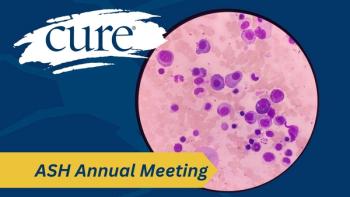
Pink's Missing Link: Male Breast Cancer
October reminds us that men get breast cancer, too. A male breast cancer survivor shares his thoughts about Breast Cancer Awareness Month. “Controversy creates conversation, and conversation incites action,” he writes.
Those of us with breast cancer are likely familiar with the October festivities that salute women and support fundraising campaigns that profess to offer hope for a cure. Breast cancer awareness is important of course, but making strides toward finding a cure for cancer demands more than awareness of the disease.
I like to think of “Pinktober” as it is often referred to – an opportunity to see breast cancer three-dimensionally; to look beyond the festivities and the fundraising and perhaps to even recognize it as a call to action for the men who have been diagnosed with the disease. But more importantly, this is a great month to reach the guys who probably don’t realize that male breast cancer is real—and it’s not always pink.
The ribbon that seems to wrap around our planet each October is widely seen as the official symbol of breast cancer — at least of the female variety. It’s highly recognizable and carries a strong psychological tug, and is most often associated with the Susan G. Komen group, but that isn’t exactly where it started.
By the way, no single company or organization or foundation owns this worldwide symbol, although individual pink ribbon designers can hold the rights on their own designs. As an example, Avon has its own, as does Estée Lauder.
Charlotte Haley, who battled breast cancer, introduced the concept of a peach-colored breast cancer awareness ribbon. In the early 1990s, 68-year-old
Haley began making ribbons by hand in her home. Her daughter, sister and grandmother had breast cancer. She distributed thousands of ribbons at supermarkets with cards that read: “The National Cancer Institute annual budget is $1.8 billion, only 5 percent goes for cancer prevention. Help us wake up our legislators and America by wearing this ribbon.”
As the word spread, executives from Estée Lauder and Self Magazine asked Haley for permission to use her ribbon, but she refused, saying the companies were too commercial. But Self Magazine was determined to use her ribbon. The magazine’s lawyers advised coming up with another color. In the end they chose pink, a color that focus groups said was “soothing, comforting and healing.” And even though those words hardly describe the reality of breast cancer, that pink ribbon has come to represent the women of the world who suffer from the disease.
I for one celebrate with the women survivors of breast cancer and join them in our mutual goal of eradicating the disease forever. Despite the controversy that surrounds the unbridled merchandizing that distorts the message this October, the truth is that controversy creates conversation, and conversation incites action. Hopefully, “Pinktober” will whip up the proverbial cancer paint pot and stir a healthy dose of blue into the mix.
At the end of the day, or at least at the end of the month, the breast cancer movement is much bigger than October, and it isn’t only about finding a cure or getting a mammogram or raising money. It’s a crusade that should unite men and women together through prevention and education and support.
“The breast of both worlds,” you might say.
For more news on cancer updates, research and education, don’t forget to





